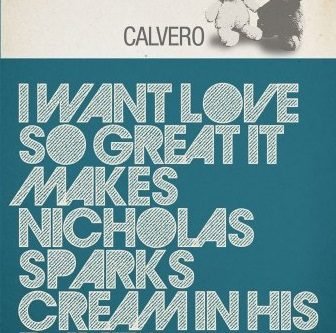 Sonata in K by Karen An-Hwei Lee
Sonata in K by Karen An-Hwei Lee
Sonata in K is the debut novel by San Diego based poet Karen An-Hwei Lee. Naturally, much of Sonata in K feels exceedingly poetic at times – the prose majestic and ornate – but the real pleasure derived from reading Sonata in K comes from the inventive imagination behind this kaleidoscopic work.
Sonata in K is a finely crafted intellectual novel packed with lush and decadent language that brings the 20th century Czech writer back to life in tender detail. The prose possesses an elevated, intellectual quality to it that never wanders too far into abstraction and always dazzles. Lee also doesn’t shy away from a cornucopic use of language. Ever the polyglot, Lee incorporates German, Hebrew, Spanish, and Japanese (to recall just a few), that accrete to form a text that is rich in language, culture, and ideas.
However, the novel’s great successes are not only to be found within the ornate prose. Sonata in K is a living, breathing, ornament of self-consciousness, intertextuality, and playfulness that when combined with a simulacrum (or maybe not) of Kafka, becomes a wholly original literary enterprise. The playfulness of the novel is apparent from the preface, where the reader is told that “K is not K.” and that “Kafka-San is not Franz Kafka.” The reader only has to venture a few pages in before understanding that these declarations are nothing more than a playful ruse. Kafka-san is indeed Kafka, albeit reimagined, reincarnated, possibly holographic, or all of the above.
The novel follows a Nisei interpreter named “K,” who has been chosen to be a translator for the recently revived Kafka or “Kafka-san.” The story is set in modern day Los Angeles and takes place over the course of a few days, as the interpreter “K” escorts Kafka-san to and from a hotel to meetings with the very kafkaesque studio executives Mann No. 1 and Mann No. 2. The meetings between Kafka-san and these men become more absurd as the frequency of the sessions increase. Kafka-san begins to find himself tangled in a web of bizarre script ideas involving a rhinoceros in love that the men allege the origins of to Kafka-san. In a subtle indictment of the entertainment industry at large, when talking about Mann No. 1 and Mann No. 2 Kafka-san remarks:
Couldn’t tell whether they were ingenious artists, con-artists, or hooligans.
As a playful allusion to Kafka’s harsh authoritarian father Hermann, Mann No. 1 and Mann No. 2 represent some of the biggest thematic ideas of Kafka’s works. They are a representation of the absurd and enigmatic bureaucracy of the entertainment world. These menschen also possess a vague and possibly illusory authority over Kafka-san, as it is hinted that they were the ones who brought Kafka-san back to life, and therefore have the power to send him “back into the ether.”
During his stay in Los Angeles, K and Kafka-san visit LA Live, Koreatown, and the Malibu coast – among other notable locales – making many gastronomical stops along the way. He marvels at the eradication of tuberculosis, the local hockey team, the apocalyptic levels of smog, underground aquifers, and pasteurized cream. The oft-jaundiced view of Los Angeles is satirized here to an extent, but by the end of the novel, despite the “shmutz of Angeleno air,” Kafka-san seems to be reinvigorated by the city:
Never felt it so keenly, not in the days of my youth, under the household tyranny of my father. Hermann. The original Mister Mann, yes. Yes. Never when I was flying kites as a university student, this shop-girl or that shop-girl… Now, I am weary with a maelstrom desire to live.
Sonata in K is also in constant conversation with the letters Kafka wrote during his life that were then published posthumously. There are allusions to these letters throughout the text, and most notably in the letters from Kafka-san to Max Brod that appear scattered throughout. Letter topics range from marveling over his 129th birthday, to the presence of thousands of bottles of mineral water at a cafe, to radishes not being radishes, and the knowledge that his sisters have since passed away. In particular, the astonishment over the thousands of bottles of mineral water alludes to a letter Kafka wrote while living out his final days in the Viennese sanatorium, where his tuberculosis gave him a “desire for good mineral water.” This sharp intertextuality is one of the many aspects of Sonata in K that makes it such an intellectually stimulating and pleasurable read for both the scholarly and casual Kafka enthusiast.
That said, one does not need to be wholly familiar with the late Czech writer to enjoy Lee’s remarkable debut novel. Sonata in K provides a banquet of elevated ideas and consciousness that should place it on many best of lists within the indie literary circuit. Through Sonata in K, Lee has given us a richly inventive text that will not only please fans of Kafka, but also the polyglot, the satirist, the poet, the stylist, and yes, the Angeleno foodie.
Sonata in K is now available via Ellipsis Press.



